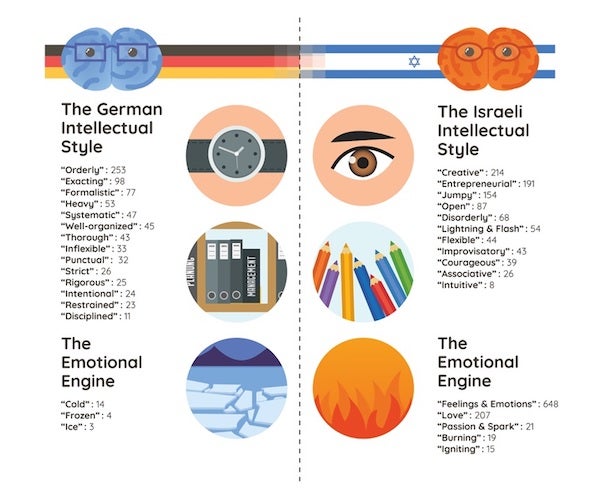This article was published in Scientific American’s former blog network and reflects the views of the author, not necessarily those of Scientific American
Culture matters when it comes to science. An uncomfortable and regrettable incident at Duke University in Janurary sent shock waves through the scientific community when a professor and program administrator suggested that her Chinese students “commit” to speaking English in professional settings. Although the administrator later apologized, the incident continues to reverberate.
Cultural misunderstandings like this are growing as campuses internationalize. In recent interviews with scientists at Harvard, M.I.T., Boston University and other institutions, I found that respondents embrace diversity in their workplaces but also raise concerns about puzzling behaviors of their international students. They say that cultural diversity in research settings is crucial but point out that some international students are “too obedient” or “hard working yet lacking in originality.” Without training in cultural sensitivity, they are often surprised and occasionally make errors of communication.
We scientists must learn to work together with our differences and appreciate that we are as culturally unique as any other cultural group. Indeed, most scientists are unaware of the intricate ways by which cultural elements enter their lab, for they do so in subliminal ways. Culture affects the way scientists perform and document their work in laboratories, respond to reviews, and talk with their students. Scientists, after all, are bearers of culture—just as their international students are. For an effective meeting of minds, we need to understand how cultures actually form them.
On supporting science journalism
If you're enjoying this article, consider supporting our award-winning journalism by subscribing. By purchasing a subscription you are helping to ensure the future of impactful stories about the discoveries and ideas shaping our world today.
Cultures also differ in their conceptions of truth and inculcate different perceptions of reality. They even affect the way we think—and international students bring these idiosyncrasies into American laboratories and classrooms and challenge American professors. These encounters may create frustrating relationships and unproductive encounters for both sides, as the Duke example illustrates. This is why scientists need to understand such differences. They need to learn to embrace the cultural richness foreign students bring while showing them how to make the most of American customs and American science.
My study of German and Israeli science, for example, shows the two cultures differ in crucial aspects that affect scientists and their intellectual styles. Notwithstanding those cultural differences, scientific collaborations create can win-win situations. In a forthcoming paper in the American Journal of Cultural Sociology titled “Hierarchy versus Symmetry in German and Israeli Science,” I expose how those two sets of cultural values predetermine scientific practices and intellectual styles.
Part of our problem is that culture is a taboo topic. Most scientists claim that “science is science.” They presume that cultural differences are irrelevant in science. However, upon reflecting on their concrete practices, most of my interviewees admit that culture affects the way they think, organize, teach and interact. They also suggest that culture unconsciously defines their scientific priorities. German culture, for example, inculcates habits that support rigorous and methodical incremental science. Israeli culture, in contrast, equips scholars for engaging in bold, innovative leaps.
The differences are systematic. In recent talks about “Fire and Ice,” I presented these contrasting intellectual styles through interviews with 144 Israeli and German scientists. The Germans, suggested respondents, are orderly, exacting, formalistic, heavy, systematic, well organized, thorough, rigorous, punctual, strict and disciplined. In Germany, they explained, emotions are not allowed into the lab. In Israel they are.
Respondents suggested that in contrast with German soberness, the Israeli intellectual style is creative, entrepreneurial, jumpy, open, disorderly, flexible, improvisatory, courageous, associative and intuitive. While describing their “unruly” intellectual style, Israeli scientists often employed an emotional “language of fire" in contrast with German “cold cognition.” “Science burns in my bones,” said one Israeli.

Credit: Netta Kasher for Gad Yair
As a mathematician explained, “Israeli scholars think with flashes and insights.” A neurobiologist agreed, stating that Israeli scientists often succeed thanks to “brightness” rather than by hard work. Those cultural tendencies explain the success of Israel as the “Start-Up Nation.” However, those cultural tendencies also explain its challenges in scaling creative inventions and engaging in long-term planning.
Notwithstanding the difficulties of the cross-cultural collaborations of “ice with fire,” respondents affirmed diversity. They suggested that those cultural differences provided for win-win encounters. Each side has strengths, they said; each side suffers from deficiencies. By combining their cultural habits, German and Israeli scientists advance beyond their independent capabilities. True, German-Israeli scientific collaborations also have a political justification in correcting for the past trauma of the Holocaust. However, scientists on both sides report that, as a consequence, they do better science.
As campuses become global, scientists and administrators would do well to learn these lessons. Cultural diversity might be a boon for science, but for collaborations to succeed we ought to embrace diversity and make the most of our cultural differences.